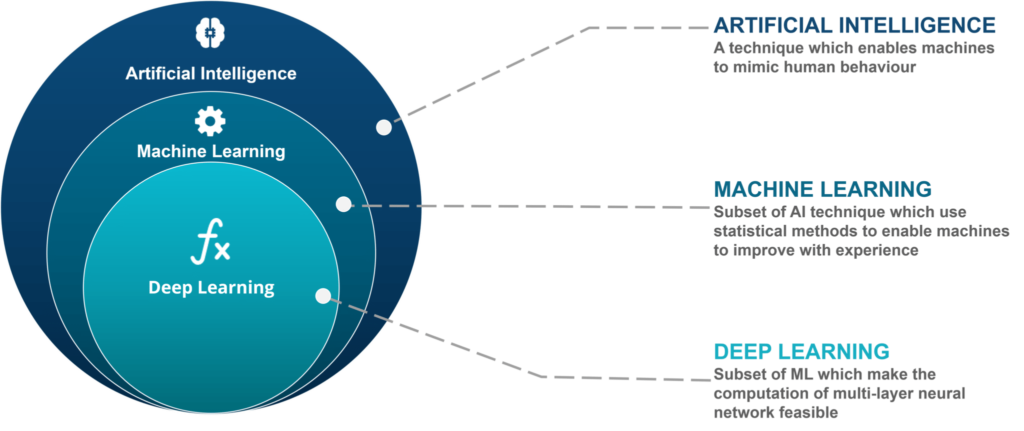
Artificial intelligence (AI) and machine learning (ML) have become the most widely used buzzwords in the manufacturing industry, and for good reason. They can assist businesses in streamlining procedures, in addition to uncovering data for better decision making. Artificial intelligence (AI) and machine learning (ML) have been boosting practically every manufacturing industry by allowing people to work more efficiently, and slowly becoming a necessary technology for organizations to stay competitive. However, like all prior distributive technologies, AI and ML are slowly losing their meaning as they are widely used in every sales pitch.
What is AI?
AI is a powerful and versatile technology that’s being utilized in industries across all sectors. This technology relies on machine learning, which essentially means learning from experience, so the AI-based platform knows how to solve problems in a similar manner each time. When companies use machine learning, they gain an advantage because they’re able to recognize patterns and detect trends, which ultimately allows for intelligent and holistic solutions to solve business problems. How is AI making it easier for companies to gain insight from their data? One of the main reasons AI is making it easier for companies to get insight from their data is through intelligent visual search capabilities.
What is ML?
ML is a subset of artificial intelligence, and it is used to make predictions based on a large amount of data, like images, videos, and texts. ML uses statistical techniques to predict patterns and relationships in data. Machine learning then helps these predictions become actions in the real world. Machine learning is what generates all the great chatbot services that many of today’s enterprises are using, like Baidu and Yahoo. Because these chatbots are able to understand complex questions based on their prior understanding, they are better able to get at the intent of the question, and deliver appropriate responses. ML also impacts robots, which can perceive and understand the world around them and learn new skills. So, what does this mean for you?
The Difference Between Artifical Intelligence and Machine Learning
Artificial intelligence refers to machines that are “automatically self-learning,” which means they’re always evolving and making better decisions as they go. By definition, it also means that they’re solving problems and working collaboratively with humans. It’s a massive shift from manual, single-minded processes and, consequently, it’s going to take more than a human to understand and optimize it. Machine learning, on the other hand, is how computers learn and make decisions on their own. This is another monumental shift for AI, in that it’s still quite difficult to program for the billions of possible variables involved.
Applications of Artificial Intelligence and Machine Learning in the Real World
Now that we’ve talked about the benefits of these technologies, let’s take a look at the ways companies are already incorporating them into their businesses. Artificial intelligence and machine learning offer exciting new ways for businesses to grow and improve their businesses. Here are just some of the ways businesses are using AI and ML to improve processes: 1. Quantum AI for Mining Big Data Quantum computing holds the potential to completely transform the way businesses analyze and deal with big data. Due to quantum computing, the data processing speed would be on par with the speed of the cloud computing industry, which is now second only to the Internet itself.